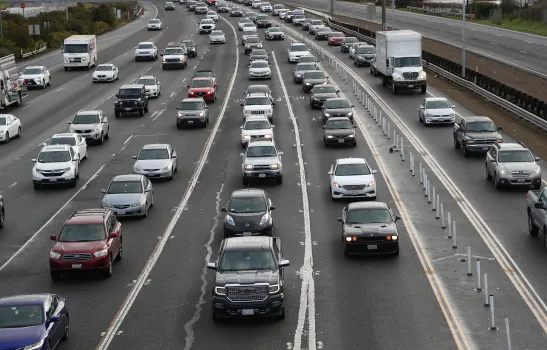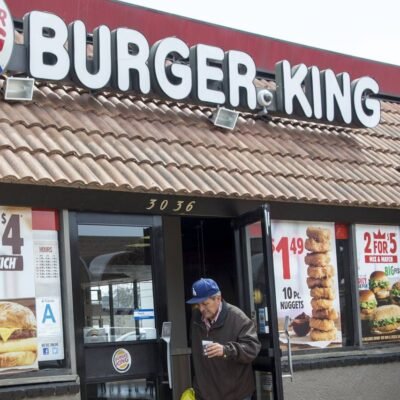Drivers who rely on FastTrak lanes may soon feel a pinch in their wallets as toll prices are set to increase. Whether you use these express lanes daily for commuting or occasionally to avoid traffic, it’s important to know how these changes will impact your travel costs. Here’s a breakdown of what you need to know about the new FastTrak toll adjustments, why they’re happening, and what you can do to minimize costs.
What’s Changing with FastTrak Tolls?
Transportation agencies in several states have announced increases in FastTrak lane tolls to address rising operational costs, road maintenance, and traffic control measures. In some regions, tolls will rise during peak hours, while others will see a steady increase throughout the day.
For instance, in California, dynamic pricing means tolls fluctuate based on traffic conditions. During rush hours, drivers could see tolls increase by 20% or more compared to previous rates. Some states are also implementing new rules for carpool discounts, requiring at least three passengers instead of two to qualify for reduced tolls. In some cases, express lane tolls may double during peak times, making it more expensive for drivers to use these lanes when they need them the most.
Why Are Toll Prices Increasing?
Officials say the toll hikes are necessary to maintain road quality, reduce congestion, and support public transportation projects. With more vehicles on the road, infrastructure maintenance costs have surged. Many regions also plan to invest in new traffic management technologies, which require funding.
Another reason for the increase is inflation. The rising costs of labor, materials, and fuel mean that agencies managing these toll roads need additional revenue to keep them running efficiently. Additionally, some transportation departments have pointed to budget shortfalls, arguing that higher tolls are the only way to keep express lanes functioning properly.
Critics argue that these price hikes place a financial burden on drivers who depend on FastTrak for their daily commute. Many commuters have expressed frustration, saying that they already pay high fuel prices and other transportation costs, and these additional fees only add to their financial strain.
How Will This Affect Your Commute?
If you use FastTrak regularly, you might need to budget for higher toll expenses. In some areas, tolls could add hundreds of dollars per year to a commuter’s expenses. Those who rely on carpooling may also need to adjust to new requirements for discounted rates.
Drivers should also be aware of potential penalties for incorrect transponder usage. Some agencies are cracking down on violations, meaning incorrect usage of carpool lanes could result in hefty fines. Additionally, increased enforcement efforts may lead to more citations being issued to drivers who fail to follow the new rules.
Beyond individual commuters, businesses that rely on highway transportation could also be affected. Delivery services, rideshare drivers, and trucking companies may see increased costs due to higher toll rates, potentially leading to higher prices for consumers as companies pass these expenses down.
Ways to Save Money on FastTrak Tolls

While toll hikes are unavoidable, there are ways to reduce costs:
- Carpooling Smartly: If your state requires three passengers instead of two for a discount, consider joining a rideshare program.
- Avoiding Peak Hours: If possible, plan your trips outside of rush hours when toll rates are highest.
- Checking Alternative Routes: Some roads have toll-free options that may take a little longer but could save money.
- Using Discounts and Promotions: Some states offer discount programs for low-income drivers, frequent commuters, or electric vehicle owners.
- Reviewing Your Account Regularly: Ensure that your FastTrak account is in good standing and that you are taking advantage of any available promotions or credits.
Public Reaction and Future Changes
The toll increases have sparked frustration among many drivers, especially those who rely on FastTrak lanes daily. Some have called for greater transparency on where toll revenues go, while others argue that the rising costs make express lanes only accessible to wealthier drivers. Transportation agencies have promised to monitor the impact of these changes and adjust pricing if necessary.
Many drivers feel that these toll hikes are unfair, particularly since FastTrak was originally designed to help reduce congestion, not become a financial burden. Some lawmakers have suggested capping toll rates or offering subsidies to lower-income drivers to offset costs.
In response to public outcry, some transportation agencies have proposed trial programs where drivers could earn toll credits by using public transportation or participating in carpooling initiatives. These types of programs aim to balance the need for revenue while still making express lanes accessible to a wide range of commuters.
Alternative Solutions to Rising Tolls
Instead of simply raising toll rates, some experts suggest alternative solutions to managing congestion and funding road improvements. For example:
- Investing in Public Transit: Expanding bus and train services could reduce the number of drivers relying on FastTrak lanes.
- Expanding Express Lanes: Adding more express lanes could help distribute traffic more evenly, reducing congestion without dramatic toll hikes.
- Implementing Mileage-Based Fees: Some states are considering charging drivers based on the number of miles driven rather than using toll roads.
- Corporate Sponsorships: Encouraging private companies to sponsor roadway improvements could reduce the need for toll increases.
These solutions may not provide immediate relief, but they could help create a long-term strategy for keeping roadways affordable and efficient.
Final Thoughts
FastTrak toll increases are coming, and drivers need to prepare for higher costs. By planning ahead, using discounts, and adjusting travel habits, commuters can navigate these changes more affordably. While toll hikes are frustrating, understanding why they are happening and exploring cost-saving strategies can help ease the financial burden.
The debate over toll increases is far from over, and many drivers hope that public pressure will lead to fairer solutions. In the meantime, staying informed about toll updates in your area can help you avoid unexpected expenses and fines. With the right strategies, you can continue using FastTrak lanes without breaking the bank.
John Deere: How This Farming Giant Is Changing Agriculture Forever






